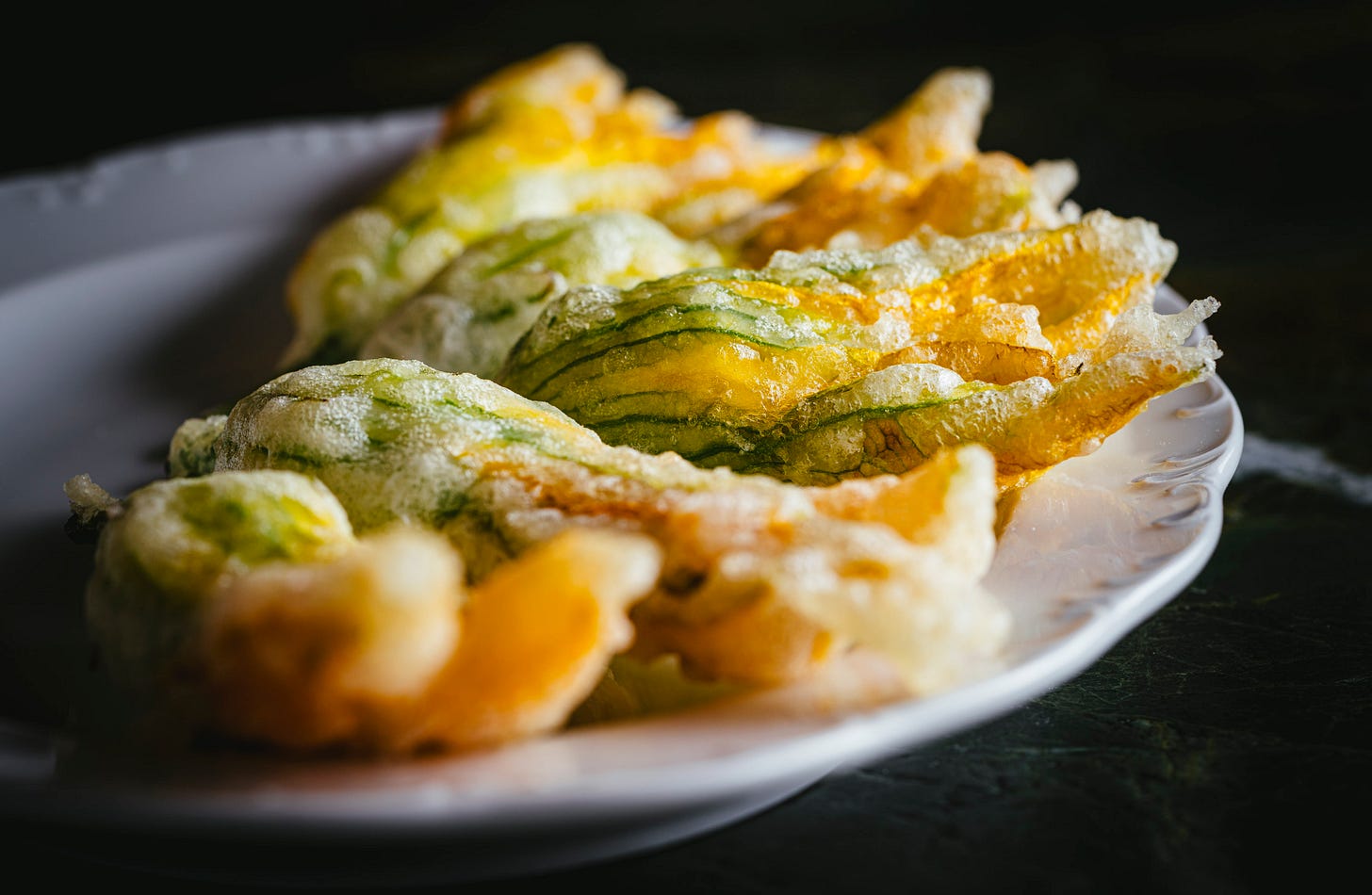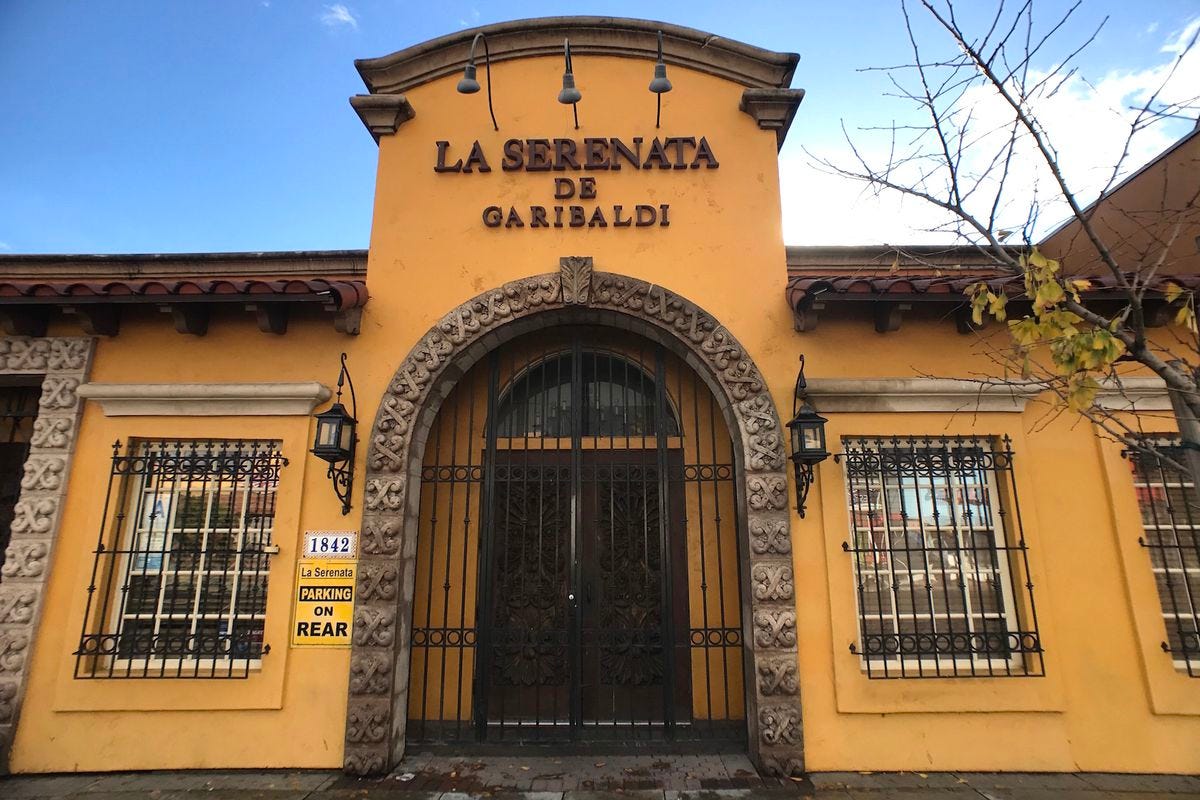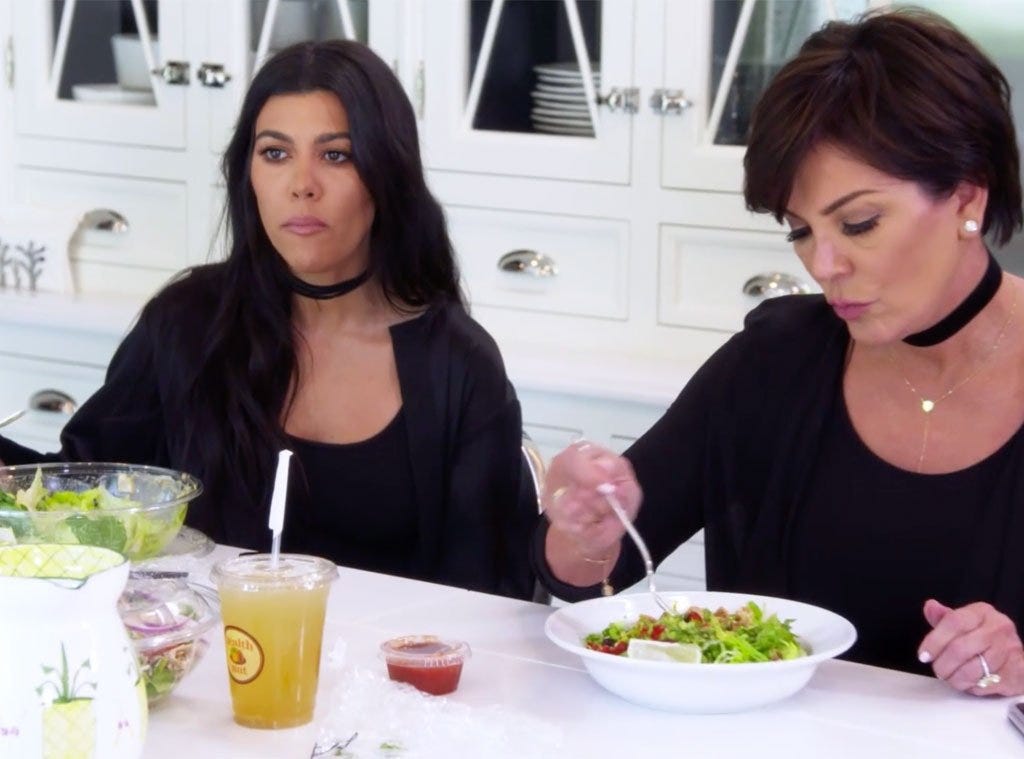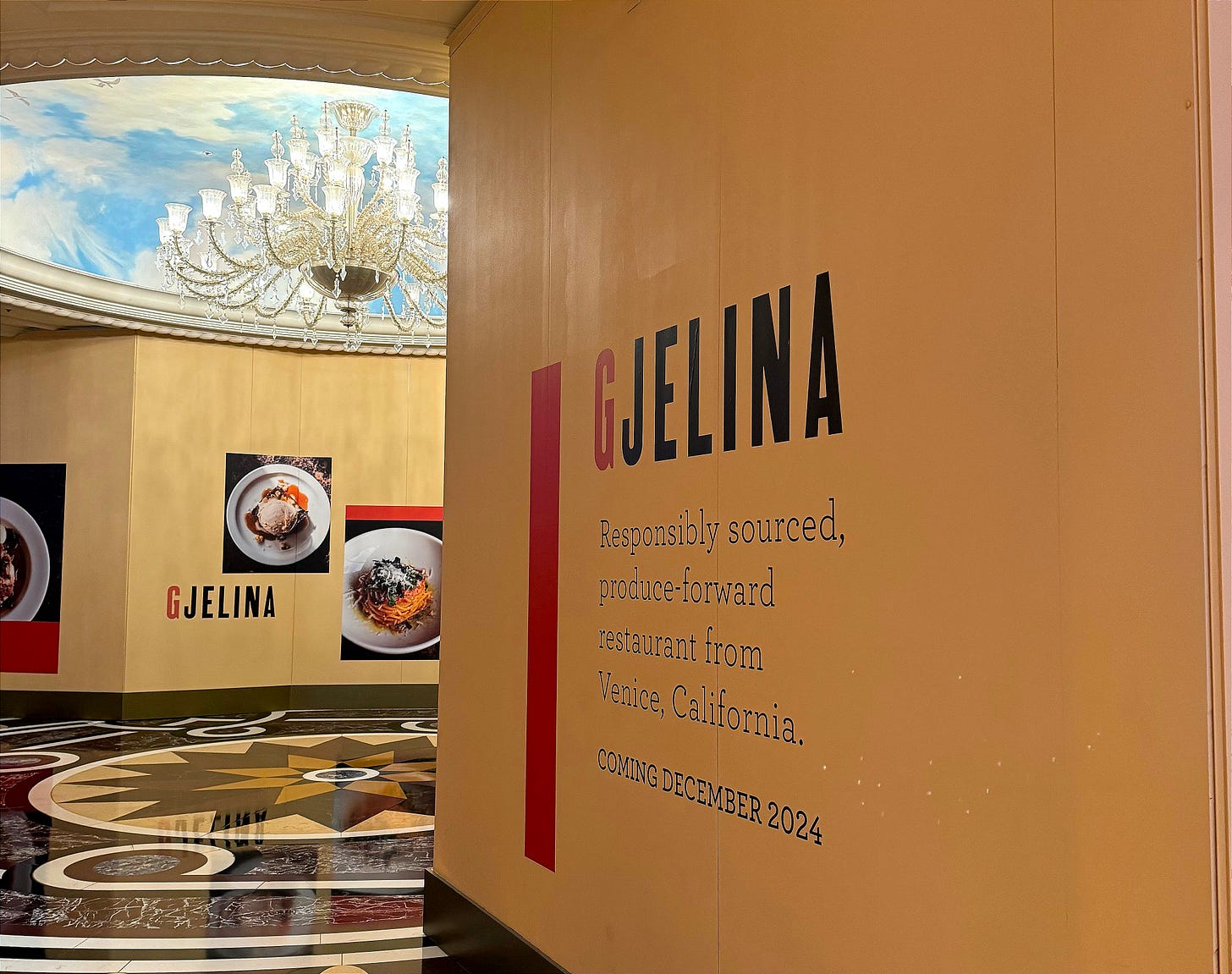Los Angeles is carrying the Las Vegas Strip on its back
Plus, a Mexican food pioneer struggles to stay alive, Calabasas struggles to be cool, and Chef Ki Kim struggles to find work-life balance.

LA FOODSTACK is a curated list of the week’s most essential food news through a Los Angeles lens. Prepared by The LA Countdown and The LA Food Podcast.
1. Why does Las Vegas want to be LA so bad?
I’ve spent the last few days in the City of Sin for no reason other than wanting to get out of town, blow off some steam, and experience so much chaos that Los Angeles will inevitably feel like a peaceful oasis upon return. They say tricking one’s mind is the key to happiness.
As my wife and I traversed the strip over the last few days, I couldn’t help but notice the many outposts of Los Angeles-based restaurants. There was Spago majestically overlooking the Bellagio fountains. Matteo’s (sister restaurant to the Arts District’s The Factory Kitchen) lurked in a Venetian corridor, while a stone’s throw away Venice’s Gjelina threatened to make a Vegas appearance in the not-so-distant future.
It got me thinking, how many LA restaurants are out here anyway? So I did what any sane person would do: I found a list of Las Vegas Strip restaurants on Wikipedia and combed through it for hours, researching the restaurants’ origin stories and organizing them in an immaculate spreadsheet to discover once-and-for-all which US city has influenced Vegas dining the most. At this point, maybe you’re thinking my OCD has OCD, but honestly, this is just my idea of a #GoodTime.
A couple of caveats before I disclose my findings:
The Wikipedia list is, shockingly, imperfect. It’s far from exhaustive and doesn’t include a lot of more fast-casual options. But think of the list as a representative sample of all that the Strip has to offer.
I played a little fast-and-loose with deciding where a restaurant “came from.” Sometimes it was clear-cut, like Carbone coming from New York. Sometimes a little less so. For example, is Nobu a Los Angeles restaurant? Not really, but Chef Matsuihisa’s story is inextricably linked with the City of Angels, so I counted it. However, I afforded the same laxity to Washington D.C. with many Jose Andres properties, and New York with modern-day chains like Delmonico’s whose roots are in the Big Apple.
Enough foreplay. Here’s what I found:
Like a BDSM convention, chains are everywhere. Vegas does nothing if not give the people what they want, and 32% of the list (a plurality) consisted of restaurants like Tao and SUSHISAMBA which have locations all over the globe and are hard to pin on any one city.
Las Vegas originals snag the silver medal. Somewhat surprisingly, 17% of restaurants were unique concepts created specifically for the City of Sin. These included long-standing landmarks like The Peppermill and newer concepts like Don’s Prime at The Fontainebleau.
15% were celebrity chef one-offs. From Martha Stewart’s monstrosity, also known as The Bedford, to Giada DeLaurentiis’ creatively named Giada, the third most common restaurant category was one-off restaurants that have made the iconography of a celebrity chef their whole personality.
Alas, when it comes to cities, LA leads the way. LA restaurants made up 13% of the list, more than any other city in the world. New York trailed LA by more than just the margin of error, staying in the single digits at 9%. The next most “successful” city was Miami with 4%. DC, Chicago, Paris, Tel Aviv, Mexico City, and Yountville (lol) also made the list.
At the end of the day, is LA’s dominance on the Strip a good thing? This question is above my station, but I do think it’s proof that Los Angeles is developing some of the food world’s most exciting and recognizable brands. And that’s a dub in my book.
2. Is work-life balance possible in fine dining?
Eater’s Matthew Kang interviewed Chef Ki Kim for the latest iteration of Service Check, a series exploring “the sustainability of Los Angeles restaurants through the lens of hospitality workers.” Ki Kim ran lauded successful Koreatown restaurant Kinn before shuttering it last year citing mental and physical health reasons. Since then, Kim has gone on to lead the kitchen at Meteora, Jordan Kahn’s post-apocalyptic rainforest cafe (wait, is that not on the restaurant’s website?) that just earned a Michelin star.
Here’s what Kim said in response to Kang’s question on whether the chef had made any headway in achieving work-life balance since shuttering Kinn:
I was trying to come up with a professional answer to that question and, very truthfully, I haven’t found a perfect work-life balance. As cooks we go to work at 11 a.m. or noon, stay past midnight, or sometimes 3 or 4 in the morning. We always jokingly say that if you can leave work before the food trucks close, that’s balance. That’s not just me, but any chef who wears a similar hat to mine: sous chefs, executive chefs, chef de cuisines. Most of us experience the same thing. That doesn’t make me feel despair in life despite the extreme time and demands of the job. There’s a satisfaction that I’m one more step toward my dream of opening my own restaurant, so that makes it worth it.
Kim’s answer got me thinking… maybe fine dining careers aren’t meant to last forever. Maybe we should think of fine dining careers kind of like we think about elite athletic careers - they last for a limited number of years in which you accept your work-life balance is going to be off, but you stomach it for the good of the dream. Along those lines, I think we need to normalize stepping away from these careers after a certain number of years and praising chefs who are able to pivot to more sustainable lifestyles. What about a Michelin prize for best post-fine dining pivot? Just spit-balling here…
For a more in-depth discussion on this topic, listen to LAist’s Gab Chabran and I on the latest episode of The LA Food Podcast. Plus, be sure to check out LAist’s reporting on free mental health resources for food professionals.

3. An LA Mexican food pioneer is down but not out - yet
In a week that saw more LA restaurant closures (RIP Alimento), LA Taco’s Taylor Marie Contarino profiled the struggles of La Serenata, a westside Mexican food institution once praised by J. Gold for the complexity of its sauces:
Jose and Aurora Rodriguez founded La Serenata in 1985 in Boyle Heights. That was a pivotal era in L.A.’s Mexican food community, and Jose Rodriguez's culinary pursuits led him to become a pioneer in rejecting the “combination plate” standard laden with soggy tacos and burritos.
Now, his restaurant's legacy is in danger of ending…
Although the restaurant has suffered from hard times, increasing rent prices, and a smaller clientele than it needs to attract, the owners and supportive family members hope to remain optimistic as they continue to push forward.
Now, Marco and his wife hope to use the power of his father’s game-changing recipes to continue the legacy of La Serenata, sustaining themselves, their family, their livelihood, and, most importantly, the legacy of a father they loved and admired so dearly.
I included this piece in today’s STACK because, in addition to beautifully profiling a family's long journey in running a business, it also highlights a relatively new trend in restaurant news. Traditionally, reporters have focused on restaurant openings, reviews, and closures (in addition to the odd PR stunt, trend story, and chef profile). Today, however, there's an emerging category of news dedicated to detailing the trials and tribulations restaurants face—a sobering sign of the times.

4. Will Calabasas ever be a cool place to eat?
A question my subconscious had always pondered, but I never knew I needed the answer to. Until SF Gate’s Karen Palmer explored the topic in detail, that is:
Despite the cache that the Kardashians bring to the area, quality Calabasas dining options have traditionally been limited to the LA offshoots that launch outposts at upscale shopping mall The Commons. The city is also home to the strip mall sushi spot Shibuya, which maintains a strong local devotion…
“It’s a much more insular community than we expected, so we’ve had a slower build,” Hank’s Bagels’ [Trevor] Faris says. “Even though our actual customer reception has been fantastic, I don’t think Calabasas is pulling people in for food. The traffic is more people who live there, going to their regular spots.”
[Gideon] Kleinman of Pedalers Fork agrees. “Everyone gets excited when the stuff opens up here, and then it just kind of fades. It’s a challenging area. People here have traveled all over and have sophisticated palates, but when it comes to what they want at home, they want something more neighborhood-y, even if it’s just a facade.”
It’s hard not to wonder if the clientele is the problem. As my studies in Bravo’s Housewives franchises have revealed, money can’t buy taste. That said, maybe not every neighborhood needs to be cool. Westwood’s been getting away with it for years.

5. Best thing I ate this week? Tijuana-style tacos from Tacos El Gordo in Las Vegas.
Ever since Bill Esparza went on his Taco Tuesday tirade hammering us with the DOs and DON’Ts of carne asada, I’ve been craving a good, smoky pile of the stuff. According to Netflix’s Taco Chronicles, the best place in Vegas to secure some tacos de asada is Tacos El Gordo, a chainlet of taquerias with four locations in Vegas and 2 in the San Diego area. In a sea of excess, I appreciated these tacos’ simplicity - a welcome respite from the maximalism assaulting my dainty palate at every other Vegas establishment we’ve dined at so far.
Other stories to chow down on…
LAist’s Gab Chabran recently proclaimed Whittier as having LA’s best tacos. As a follow-up, they had LAist listeners weigh in with their fave tacos.
Hangaburs won LAist’s Tournament of Cheeseburgers last month. LAist checked in with them to see how heavy is the crown.
Punch’s Courtney Iseman took a fascinating look at the “postmodern” craft beer movement.
Eater’s Mona Holmes chronicled the life and times of LA success story Wally Amos, the late founder of Famous Amos cookies.
This week on The LA Food Podcast…
Gab Chabran, LAist Associate Editor of Food and Culture, sat down with me to run through the headlines of the day. He gave us a sneak preview of what LAist has planned this Food Friday, including a follow-up to his article boldly proclaiming Whittier as LA’s taco capital. We discuss mental health in fine dining, the postmodern beer movement, and why Angelenos should care about the passing of Famous Amos founder Wally Amos.
We’re also joined by Daniel Shemtob, the founder of The Lime Truck and HATCH in DTLA. Daniel talks to us about his latest venture, Snibbs, which is reimagining what footwear looks like in the kitchen. It’s a fun, rollicking ride with a guy who exudes entrepreneurial spirit. I highly recommend this episode if you’re a fan of podcasts like How I Built This or My First Million.
Want more? Follow The LA Countdown on Instagram, TikTok, and YouTube. Listen to The LA Food Podcast wherever podcasts are heard and follow @lafoodpod on Instagram.






